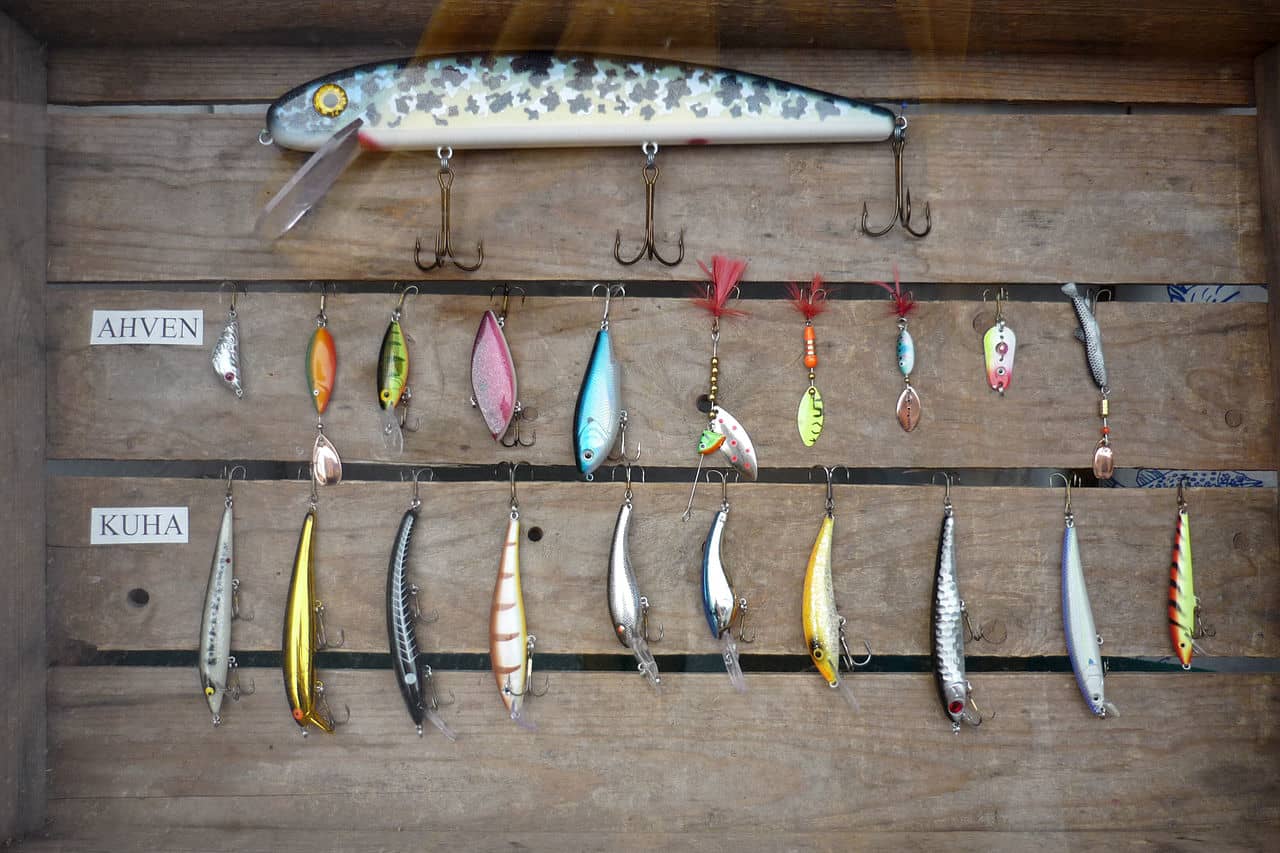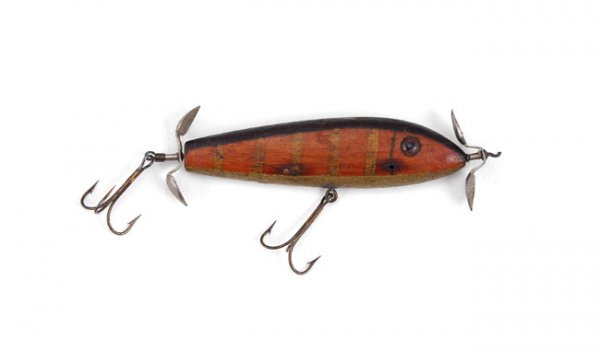The 5 Most Expensive Antique Lures in Existence
Daniel Xu 09.24.14

Odds are that at some point you’ve picked up one of your father’s or grandfather’s lures and wondered whether was worth more than your car (or maybe hoped it was). Thanks to the internet, it is no longer impossible to trace ancient lures back to their manufacturers and designers, and perhaps even to some chap on eBay who is selling the same exact one for the price of a morning coffee. In the world of fishing antiques, nabbing a valuable lure is just one step below beating George Perry’s 1932 largemouth bass record—all but impossible. However, if you scroll down this page and recognize any of these lures at home, you just might well be walking away with a lunker.
This is the list of the most expensive antique lures sold at auction. Some lures have been omitted due to being too similar to those listed, while others, like the notorious million-dollar lure, have been left off the list because they are not antiques. Thus, the list is not comprehensive, but it offers a look into the upper tiers of fishing collectibles. If you think you have one of these at home, we’d suggest keeping it far away from your usual tackle box, and perhaps consulting with an expert.
Heddon Dowagiac Expert – $17,600
Invented by beekeeper and newspaperman James Heddon, this turn-of-the-century lure was named after Dowagiac, Michigan, where Heddon worked. Originally sold as the Dowagiac Casting Bait, Heddon eventually shortened the name of the blue and white lure to the “Dowagiac Expert.” Very few copies of this lure survive to this day, and fewer still in good condition. Demand for the Dowagiac Expert is so high that the white cardboard box it came in can sell for as high as $1,000 without the lure itself.
This slopenose was sold by Lang’s Auction (the antique auction house that sold the rest of the items on this page) for a whopping $17,600.
Shakespeare Muskellunge Minnow – $23,100
This rare version of the Shakespeare Muskellunge Minnow is believed to be the earliest of its kind. Another lure designed and produced in Michigan, the Shakespeare Muskellunge Minnow is a part of the legacy that lure maker William Shakespeare, Jr. left behind. The son of a banker, Shakespeare revolutionized the industry with the introduction of his aptly named “Revolution” lure in the late 1890s. Equipped with three treble hooks and a propeller, it was one of the earliest wooden baits sold in the United States. This carefully-preserved minnow is a refinement of that original lure, and much to the surprise of auctioneers, blasted past the estimated final price of $5,500.
Chautaugua Minnow – $37,400
Made by Krantz & Smith of New York in 1908, this lure was actually not well-received when it was first introduced. That was because anglers found that the lure was ineffective and generally had a low success rate when it came to catching fish—a bad omen for any lure. The low demand at the time meant that production was cut off shortly before the first few Chautaugua Minnows were made, making them especially rare to collectors. Count yourself lucky if you manage to find one of these because at one time in its history, somebody saved it from the scrap heap.
Unidentified First American Wooden Minnow – $42,560
Listed as the “single most historic and important wooden minnow to ever come to auction,” this lure is considered the predecessor of all American wooden underwater lures. According to auctioneers, this mysterious lure was found in the tackle box of an Ohio angler next to an assortment of antique fishing tackle. Although historians were not able to trace the manufacture of this rare and possibly one-of-a-kind lure, it is compared as practically identical to early Trory minnows. This particular lure is described as in very good condition despite dating from the late 1890s.
Giant Haskell Minnow – $101,200
The 1853 copper Giant Haskell Minnow is likely the most expensive production lure ever sold. When bidding ended in 2003 at a whopping $101,200, this lure became the highest-priced fishing-related collectible sold at auction. While there have been reports of other Giant Haskel Minnows in the hands of private collectors, so far this is the only one to have surfaced. Produced by gunsmith Riley Haskel in 1859, the lure was one of the first that actually resembled a fish. Its revolving tail also made it the first animated lure to be sold in America. While there are a number of smaller Haskell lures, the exclusivity of this 10-inch minnow makes it worth more than its weight in gold.
Are there any that we missed? Have you ever made a rare find? Fill us in in the comments below.






